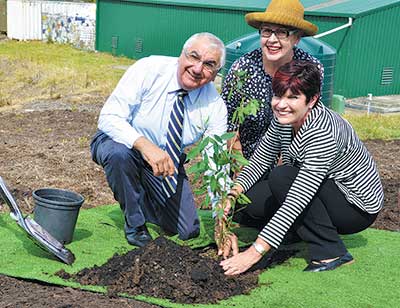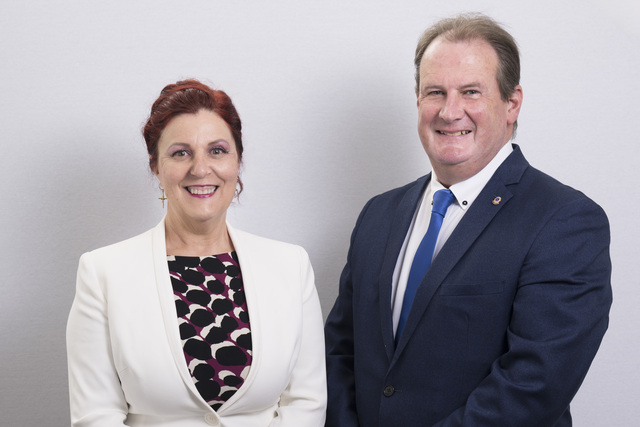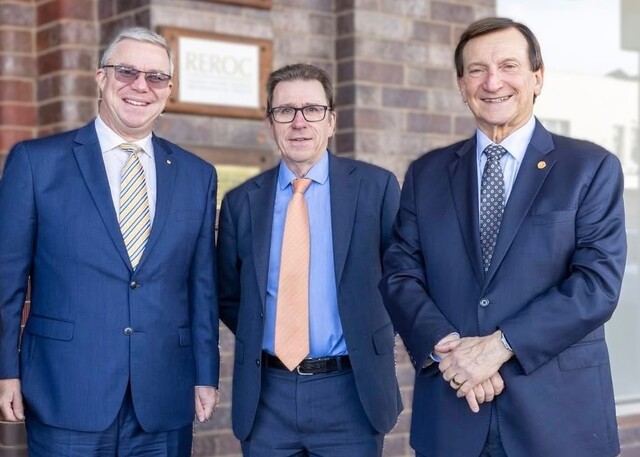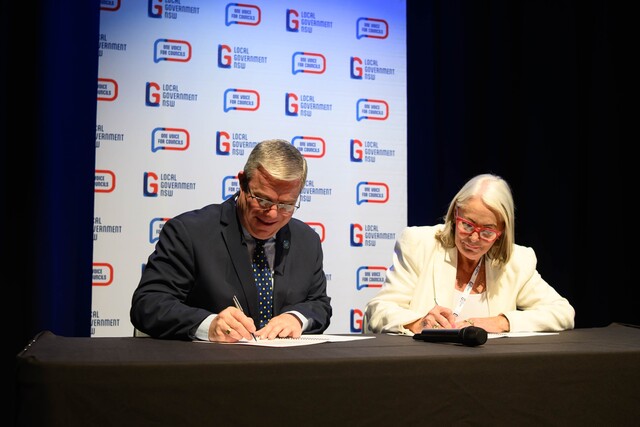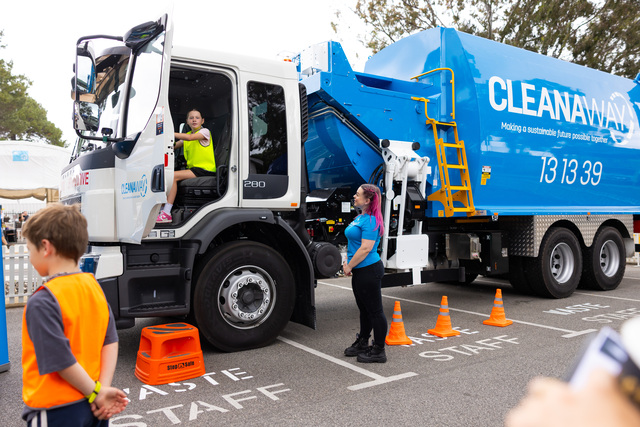There is no denying the biggest national issue, and indeed global challenge, is tackling climate change.
There’s also no denying councils are in a time of unprecedented financial strain.
That’s where Lismore City Council has discovered the immense value of environmental sustainability in helping to save the planet and its own hip pocket.
General Manager Gary Murphy said Council had looked at innovation, taking risks and not being afraid to embrace a new way of thinking.
“Our people want Lismore to be a model of sustainability and now it’s up to us to do it.”
Lismore City Council is building a $3.65 million Materials Recovery Facility and Glass Processing Plant, which will recycle waste from other regional councils and crush coloured glass to turn into asphalt and roadbase.
The facility will employ 13 local people, including 10 with a disability, who will sort an average of 15,000 tonnes of recyclables a year, doing away with the need to transport them to Queensland for processing. The venture will not only cut down significantly on greenhouse gas emissions, but will reduce transport costs for neighbouring councils, and soon become a revenue stream for Council.
It is just one of a raft of projects where environmental sustainability and profit go hand-in-hand.
In 2013 Lismore City Council opened the first licensed phytocapping site in NSW with a ceremonial tree planting by NSW Environment Minister Robyn Parker.
In essence, a phytocap is a complex layer of local native vegetation that controls drainage at landfill sites, replacing the traditional method of capping with layers of clay, gravel and dirt.
Lismore’s old, 1.3-hectare landfill will now be planted with koala food trees and as these grow, a diverse understorey will be added, creating a living cap for the old landfill site as well as providing habitat for native wildlife. It’s also cheaper than traditional capping.
“Money doesn’t grow on trees, but this is about as close as you get,” Mr Murphy said.
Meanwhile, Mr Murphy set the Council a challenge to become self-sufficient in electricity within 10 years.
Lismore has signed Australia’s first Memorandum of Understanding (MOU) as part of the new Farming the Sun project.
The idea is based on building a 100kW solar farm on the local treatment plant, which required power 24/7, with Council agreeing to buy that power for 10-25 years.
Local investors would be sought to support the Lismore Community Solar Farm, which would offer a return on investment almost double that of a bank.
Lismore boasts one of the highest uptakes of solar in NSW and already more than 50 people have put their name down to purchase shares.
Council has also built a new, constructed wetland in an effort to treat water quality in local creeks. So far the artificial wetlands are performing well with the potential to now naturalise 16 other sub-catchments in the Local Government Area.
Mr Murphy said in the last year alone, simple staff ideas have saved hundreds of thousands, such as installing a new tank that reduced water bills by $32,000.
“It’s not a matter of changing everything at once – it’s about looking systematically at where we can cut transport costs here, save a bit of energy usage there.
“Those small changes can make such a difference on a whole-of-council scale. We want to lead by example and with climate change a very real and present danger, we simply can’t afford to wait.”

